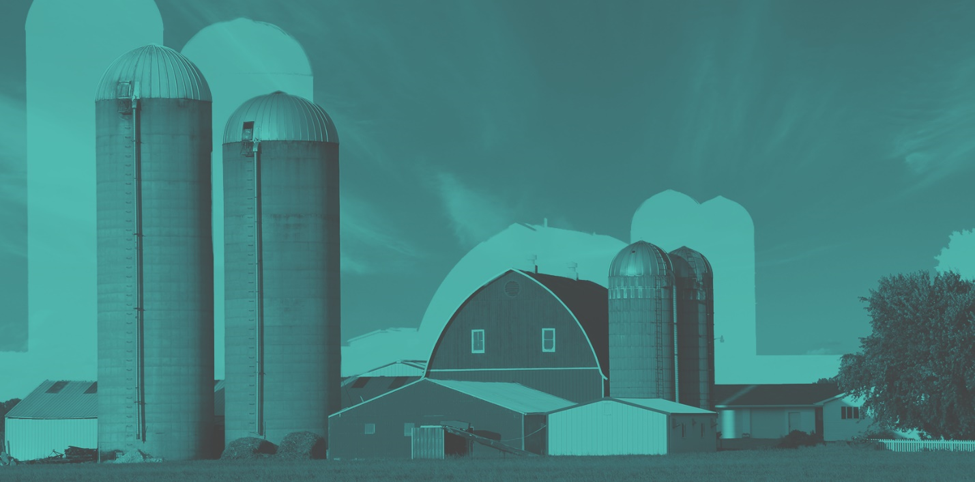The Family Farm: Strategies for Surviving and Thriving
“I had rather be on my farm than be emperor of the world.”
-George Washington
The growth and strength of our nation, with its vast geographic territory, are integrally connected to farming. Although the percentage of the population engaged in farming has shrunk dramatically since the nation’s early days, there are still two million farms in the United States operating over 900 million acres of land, and six million people live in households attached to a farm.1 Farming remains a vitally important sector for both economic and national security reasons.
Farming is also a way of life for millions of Americans. Farmers have a strong emotional attachment to their farms that may not be present for the owners of many other businesses. In many instances, the family farm is also the location of the family home. Family farms of varying sizes account for 98 percent of all farms operating in the United States.2 Most of them—89 percent—are small family farms,3 though these farms account for only 26 percent of production.4
Unfortunately, the future of the family farm is in jeopardy. In 2017, between one-half and three-quarters of small farms (depending on the type of farm), had an operating profit margin in the red zone, signifying a high risk of financial problems. In fact, for many small farming families, the majority of household income comes from off-farm sources such as wage income, non-farm business earnings, and dividends,6 and operators of small farms frequently report losses from farming.7
What Can Be Done?
In light of the considerable challenges faced by family farms, particularly small ones, including high land prices, stiff regulatory requirements, rising equipment costs, and the unpredictability of weather, farmers need to implement business and estate planning strategies that will strengthen their likelihood of success over the long term. Farmers should carefully consider which type of business entity will facilitate not only the present success of their farm but the future as well. Their planning choices should also take into account the eventual transfer of the farm to the next generation. Family farms are more likely than other businesses to be passed down to succeeding generations, so the strategies implemented should consider not only the needs of the present generation but also those of the generations that will follow.
Identify Goals
The goals of the current generation of farm owners are likely to differ in some respects from those of the family members who will succeed them. In addition to ensuring the current viability of the farm, they are likely to be concerned about their future financial security. Members of the older generation, as they age, need to maintain sufficient income for their retirement, while scaling back and eventually eliminating their role in the management of the farm. In addition, they want to ensure the continuation of the farm and the fair treatment of their heirs, including those who are unlikely to be involved in the farm business. Minimizing both estate and income taxes is also usually a major concern.
Similarly, for the succeeding generation, tax liability is likely to be a major concern. Many heirs have been forced to sell their family farms in order to pay estate taxes, so it is vital to minimize the amount of estate taxes and obtain insurance policies with a payout sufficient to cover taxes that are due.8 In addition, future heirs to the farm need to assume management responsibilities and increase their share of ownership. This could occur in stages, depending upon the individual circumstances and preferences of both generations. For example, there could initially be a transfer of management, and later, a transfer of assets. Alternatively, there could be incremental transfers of both management and ownership. The members of the younger generation who are interested in operating the farm will often also want to ensure that their decision-making authority is not impeded by non-farming heirs.
Create Business and Estate Plans
The current generation of farmers may be reluctant to discuss the future for emotional reasons, such as reluctance to give up control of the farm operations and acknowledge their own mortality. Nevertheless, it is essential to address these issues and plan ahead, even decades in advance of an anticipated transfer. Early planning might aid in avoiding estate tax liability that could force the sale of the farm, unnecessary disputes between family members, or distribution of the farmer’s estate under the intestacy statute, as well as ensuring a smooth transition in the operation and ownership of the farm and a fair distribution of the estate between farming and non-farming heirs. To accomplish these goals, and to establish the present success of the farm, it is important for every farming family to have a well-thought-out business and estate plans.
The degree of complexity of the business and estate planning required will vary depending upon the particular circumstances and goals of each farming family. Currently, most farming businesses, regardless of size, are held as sole proprietorships.9 The benefit of a sole proprietorship is that there are few legal requirements: Usually, all that must be done is registering the farm’s trade name with the secretary of state. No other paperwork or annual reports are generally needed. For tax purposes, there is no legal distinction between the farmer individually and the sole proprietor farm business, and the farm’s income is passed through to the owner of the farm. Unfortunately, for farmers, the simplicity associated with this type of business organization is often outweighed by its downsides. One of the main problems with a sole proprietorship is the lack of a legal distinction between personal and business assets, so if a personal judgment is obtained against a farmer, a lien could be placed on the assets of the farm. If a sole proprietor of a farm becomes incapacitated, management of the farm and access to bank accounts can be difficult without court intervention. Another important deficiency is that the sole proprietorship provides no mechanism for a smooth transfer of the farm to succeeding generations, resulting in probate administration following a farm owner’s death, which is both costly and time-consuming.
As legal advisors to farmers, we should encourage them to consider other types of business entities and estate planning tools. A limited liability company (LLC) or a family limited partnership (FLP) can be formed to protect assets, reduce tax liability, and provide for an orderly transfer with minimal conflict between family members. Using these business entities, a management and decision-making structure can be established that will not only facilitate the current success of the farming business but also allow all the affected family members to feel assured that plans for the farm’s future operation will be implemented. Business planning tools such as a buy-sell agreement, a management agreement, or employment agreements can be implemented to help facilitate smooth management and transfer of the business. Estate planning tools, such as a will, trust, and other planning documents, such as a health care power of attorney, a living will, and a durable power of attorney should also be implemented to accomplish the family’s goals.
Because family farms often have significant assets but lack liquidity, long-term care planning for aging farm owners is also important in ensuring farm preservation. Long-term care, regardless of whether it is provided at home or in a nursing facility, is a substantial expense that could be financially disastrous for a farming family, as it could force the sale of the farm or its assets. Planning for long-term care should be done well in advance. Under federal law, most transfers of assets made within five years of the date a Medicaid application is submitted will be disregarded, and those who transfer assets during that period may be penalized. Long-term care insurance, though expensive, is significantly less costly than a lengthy stay in a nursing facility and a better solution than having to sell the family farm.
Family farms have often been in the family for generations. Farming is more than merely an occupation: Since colonial times, many U.S. farmers have had a strong bond to their land, passed down to them by their parents or grandparents. Their farms are not only a link to previous generations of each farming family, but also to earlier periods in the history of our nation. Preserving the family farm not only averts a tragic loss for individual farmers, but also safeguards an important part of our country’s past and an essential part of its future. As legal advisors, we can play an important role in preserving the family farm by helping farmers think through and implement the business and estate planning strategies that will enable them not only to survive but also to thrive.



